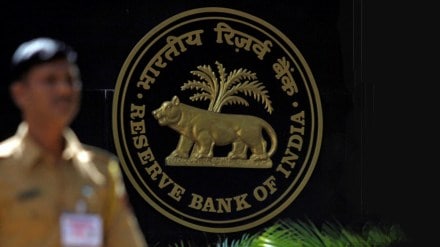By Christina Titus
The Reserve Bank of India (RBI) has drained Rs 84,975 crore from the banking system through its seven-day variable rate reverse repo (VRRR) auction on Friday. It accepted all the bids at a cut-off yield of 5.49% and the weighted average rate was 5.45%, RBI said in the release.
The RBI’s move likely aimed to anchor short-term rates with the repo rate, according to market participants. After the cumulative policy rate cut, repo rate is currently at 5.5%.
The inter-bank call rate and tri-party rates were near the lower end of Liquidity Adjustment Facility (LAF) corridor due to ample liquidity in the system. The weighted average call rate ended at 5.38% on Friday, while tri-party repo rate was 5.42%. Despite the spike in money market rates on Friday, the traders anticipate inter-bank call money rate to settle down to the range of 5.30%-5.35%.
On June 26, the liquidity in the banking system was in surplus of around Rs 2.71 lakh crore, according to RBI data.
“Considering the month-end as well as quarter-end pressure, along with a couple of larger IPOs, I think Rs 85,000 crore is a reasonable subscription at the auction,” said a treasury head with a private bank.
He added that the impact on overnight market rates was a bit more higher than what I expected, but it was because of the month-end pressure plus the initial public offerings (IPOs) that are going on, at present.
On Tuesday, the central bank announced a seven-day VRRR amounting Rs 1 lakh crore to suck out excess liquidity from the system, its first such operation in seven months.
Market participants said government’s month-end spending in terms of pensions and salaries, which is expected to start from June 30, will likely off-set outflows through VRRR auction. Liquidity surplus will hover around Rs 2 lakh crore-Rs 2.5 lakh crore in July, they said. The liquidity was at Rs 2.71 lakh crore as on Thursday. In the month of June, the system liquidity averaged to Rs 2.74 lakh crore and it reached Rs 3.62 lakh crore June 13, highest in three years.
“The system liquidity will become substantial by August and the full impact of RBI’s surplus transfer and CRR cut will come into effect by December. Then the system liquidity may go up to Rs 6 lakh crore by December even after considering tax outflows for September and December quarter,” said Gaura SenGupta, chief Economist, IDFC FIRST Bank.
The RBI announced CRR cut by 100 basis points to 3% in the June monetary policy meeting, which will unlock Rs 2.5 lakh crore liquidity. The reduction will happen in four equal tranches of 25 bps each with effect from the fortnights beginning September 6, October 4, November 1 and November 29. Besides, RBI’s record transfer surplus of Rs 2.69 lakh crore to the government for FY25 will also flow into the system in tranches, supporting the liquidity.
Market participants are of the view that RBI may continue with such operations if the system has excess liquidity to ensure short-term rates align with the repo rate.
